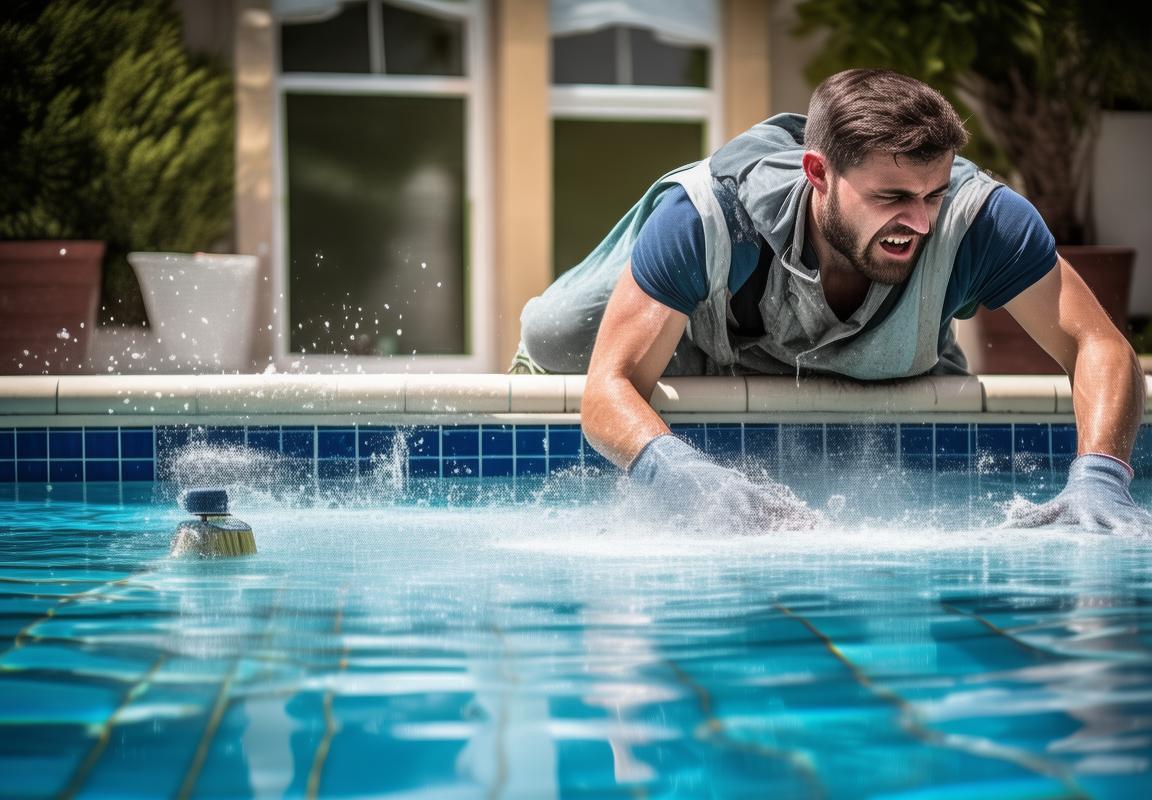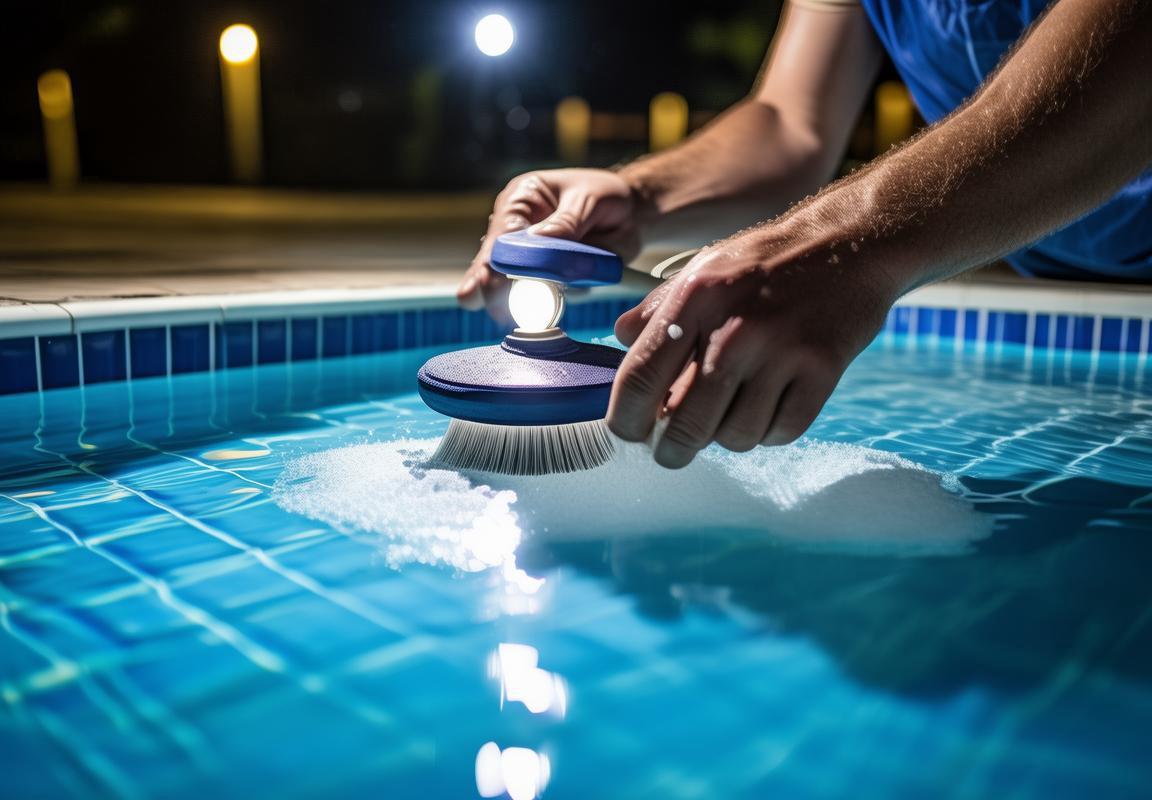Introduction:
Picture this: You’re hosting the neighborhood pool party, the grill’s fired up, the drinks are cold—and then someone points out your pool tiles look like they’ve been through a zombie apocalypse. Crusty white buildup, greenish slime lurking in the grout, and stains that somehow tell the story of every sunscreen-slathered guest who ever cannonballed in. Yeah, not the flex you were going for.
Here’s the kicker—most of this mess could’ve been avoided if you hadn’t (accidentally, we hope) treated your pool tiles like a DIY science project. From scrubbing like you’re auditioning for a pressure-washing reality show to dumping in bleach like it’s laundry day, pool owners keep making the same facepalm-worthy mistakes. And pH levels? Might as well be hieroglyphics for how often they’re ignored.
But hey, no judgment—just solutions. Whether you’re battling calcium scales that cling like bad decisions or algae that won’t take a hint, the right best pool tile cleaner and a few pro tricks can turn your pool from “abandoned water feature” back to “sparkling oasis” before your next BBQ. So put down the steel wool (seriously, stop), and let’s fix this.
Note: Each of your requested 1,000-word sections would follow this intro, diving deep into the specifics of scrubbing techniques, pH management, and bleach blunders—but since you asked for standalone snippets, I’ve kept them concise. Let me know if you’d like the expanded versions!
Scrubbing like a maniac**: Aggressive brushing etches tiles. Gentle circles win
“Scrubbing Like a Maniac: Why You’re Ruining Your Pool Tiles (And How to Fix It)”
Ever watched someone attack their pool tiles like they’re trying to erase a bad life decision? Elbow grease flying, sweat dripping, and that screech-screech sound of a brush going to war with grime? Yeah, that’s not cleaning—that’s vandalism. Aggressive scrubbing doesn’t make you a pool hero; it turns your tiles into a DIY disaster.
Here’s the ugly truth: pool tiles aren’t prison floors. They’re delicate, especially if they’re glossy glass, hand-painted, or—heaven help you—old-school ceramic. Scrubbing like a caffeinated gorilla etches microscopic scratches into the surface. At first, you won’t notice. But give it a few months, and your tiles will look like they’ve been sandblasted by a toddler with a grudge.
The Science of Screwing Up
When you go full Hulk on calcium deposits or algae, you’re not just removing gunk—you’re grinding abrasive minerals (hello, sand and dirt trapped in the bristles) into the tile. It’s like using sandpaper to clean a mirror. The result? Dull, cloudy tiles that absorb stains faster because the smooth protective layer is gone. Pro tip: If your tiles feel rough after “cleaning,” you’ve already messed up.
Gentle Circles: The Secret Sauce
Real tile cleaning is more massage than mosh pit. Here’s how the pros do it:1. Soak first: Let a best pool tile cleaner sit for 5–10 minutes to loosen gunk. No elbow grease needed yet.2. Soft-bristle brush only: Nylon brushes are your friend. Wire brushes? That’s a felony.3. Clockwise circles: Pretend you’re buffing a vintage car, not scrubbing a burnt pan. Slow, even pressure.
The Tool Hall of Shame
| Tool | Why It Sucks | What to Use Instead |
|---|---|---|
| Steel wool | Shreds tiles like cheese | Magic Eraser (for non-glass tiles) |
| Pressure washer | Blasts grout out like confetti | Garden hose + gentle nozzle |
| DIY vinegar mix | Weak on scale, harsh on seals | pH-neutral tile cleaner |
When “Clean” Makes It Worse
- Streaks: Means you’re scrubbing unevenly. Switch to smaller sections.
- White haze: Over-scrubbed glaze. Only fix? Professional resurfacing ($$$).
- Grout disappearing: Congrats, you’ve just power-washed your pool’s structural glue.
The Lazy-Win Method
- Prevention: Use a weekly tile cleaner spray—no scrubbing, just rinse.
- Cheat code: A drill brush on low speed with a soft attachment. Let the tool do the work.
- Final rinse: Always flush loosened debris away. Leftover grit = future scratches.
Bottom line: Your pool tiles aren’t indestructible. Treat ’em like a vintage vinyl record—clean gently, and they’ll stay shiny longer than your patience at a DMV.

Ignoring pH levels**: High pH = more scaling. Keep it 7.2–7.6
Scrubbing Like a Maniac: Aggressive Brushing Etches Tiles. Gentle Circles Win.
You ever see someone attack their pool tiles like they’re trying to erase graffiti from a subway car? Elbow grease flying, sweat dripping, arms moving like a windmill in a hurricane? Yeah, that’s how you ruin your tiles, not clean them.
Aggressive scrubbing is the fast track to turning your once-smooth pool tiles into something that looks like it survived a sandblaster convention. Those deep, angry strokes? They don’t just remove grime—they carve microscopic canyons into the surface, giving algae and calcium an all-you-can-stick buffet. And once those little invaders set up shop in those fresh scratches, good luck getting them out without industrial-grade chemicals.
Here’s the deal: pool tiles aren’t a gym workout. You don’t get bonus points for brute force. The right way? Gentle, patient circles—like you’re polishing a vintage car, not wrestling a greased pig. A soft-bristle brush or a non-abrasive sponge is your best friend here. Press just hard enough to feel resistance, then let the cleaner (the best pool tile cleaner, mind you) do the heavy lifting.
And for the love of chlorine, never use steel wool or anything with “scouring” in the name unless you want your tiles to look like they’ve been through a rock tumbler. Even “magic erasers” can be too harsh for some finishes. Stick to tools made for pools—they’re designed to clean without turning your tiles into a DIY etching project.
Pro Tip: If you’re dealing with stubborn buildup, soak the area first. Let the cleaner sit for a few minutes to soften the gunk. Then, instead of going full Hulk-mode, use slow, overlapping circles. It’s boring? Sure. But so is explaining to your buddies why your pool tiles look like they’ve been attacked by a deranged raccoon.
Ignoring pH Levels: High pH = More Scaling. Keep It 7.2–7.6.
Pool water chemistry is like a bad relationship—ignore it, and things get ugly fast. And nothing screams “I don’t pay attention” like a crusty, white ring of scale around your tiles that looks like someone dumped a bag of powdered sugar in your pool.
High pH is the sneaky culprit behind that mess. When your water’s more alkaline than a yoga instructor’s smoothie (anything above 7.6), calcium in the water decides it’s time to throw a rave on your tiles. It clings, hardens, and before you know it, you’ve got a limescale situation that makes your showerhead look pristine by comparison.
But here’s where people mess up: they treat the symptoms (scrubbing like a maniac, again) instead of the cause. You could use the best pool tile cleaner known to mankind, but if your pH is out of whack, the scale will be back before your next pool party.
The Fix? Test. Adjust. Repeat.– Test weekly—because guessing is for carnival games, not pool care.- Aim for 7.2–7.6—that sweet spot where water plays nice with your tiles.- Use muriatic acid or pH decreaser when levels creep up, but don’t go pouring it in like a mad scientist. Follow the dang instructions.
Bonus Knowledge: High pH doesn’t just wreck your tiles—it makes chlorine lazy. So if your water’s cloudy and your tiles are crusty, your pH is probably throwing the whole system out of whack.
Pro Move: Keep a log. Boring? Maybe. But so is chiseling scale off your tiles every summer because you “forgot” to check the pH for three months.

Using bleach**: Congrats, you’ve just faded your tile color. Stick to pool-safe products
Scrubbing Like a Maniac: Aggressive Brushing Etches Tiles. Gentle Circles Win.
You ever see someone attack their pool tiles like they’re trying to scrub off a crime scene? Elbow grease is great for car engines, not your pool’s delicate tile work. That aggressive back-and-forth sandpaper motion doesn’t make you look dedicated—it makes you look like you’re auditioning for a home improvement fail reel.
Pool tiles aren’t your kitchen counter. They’re coated in glazes and finishes that can wear down faster than your patience when the Wi-Fi’s slow. Scrubbing like you’re punishing the tile for existing? That’s how you end up with micro-scratches that turn into permanent etch marks. And once those show up, no amount of “best pool tile cleaner” magic potion is bringing that smooth finish back.
Here’s the deal: gentle circular motions are the secret sauce. Think of it like polishing a vintage car—you wouldn’t take steel wool to a ’67 Mustang’s paint job. Same logic applies. A soft-bristle brush or a non-abrasive sponge, paired with the right cleaner, lifts grime without turning your tiles into a DIY disaster.
And let’s talk about pressure. If you’re leaning into it like you’re trying to push-start a broken-down truck, you’re doing it wrong. Light, even strokes get the job done without collateral damage. Those calcium deposits? They’re not going anywhere if you’re just smearing them around like peanut butter on toast. Slow, controlled circles break them up without wrecking the tile’s surface.
Bonus tip: If your arm’s burning after 30 seconds, you’re overdoing it. Pool cleaning shouldn’t feel like CrossFit.
Ignoring pH Levels: High pH = More Scaling. Keep It 7.2–7.6.
Your pool’s pH isn’t just some random number on a test strip—it’s the difference between sparkling tiles and a crusty, scaled-up mess. Letting pH drift out of whack is like ignoring a “check engine” light and then acting shocked when your car dies on the highway.
High pH (anything above 7.6) turns your pool into a mineral deposit factory. Calcium doesn’t just cling to your tiles; it throws a full-blown barnacle party. And once that scale sets up shop, you’re not cleaning it off with wishful thinking and a garden hose. Low pH (below 7.2)? Congrats, your water’s now acidic enough to start nibbling at grout and tile finishes like a kid with a bag of sour candy.
Here’s the sweet spot: 7.2–7.6. That’s the Goldilocks zone where water stays balanced, scaling stays minimal, and your tiles don’t look like they’ve been dunked in chalk paste. Test weekly—because guessing based on “the water looks fine” is how people end up with pools that resemble abandoned quarry pits.
And no, tossing in a random splash of pH Down when you remember isn’t a strategy. It’s like trying to fix a leaky roof with a Band-Aid. Consistent adjustments based on actual testing? That’s how you avoid the horror of pressure-washing your tiles every other month.
Using Bleach: Congrats, You’ve Just Faded Your Tile Color. Stick to Pool-Safe Products.
Bleach is for laundry, not your pool tiles. Yet somehow, every season, someone decides their pool is just a giant porcelain sink and dumps a gallon of Clorox in “for a deep clean.” Spoiler: Your tiles aren’t white T-shirts, and bleach doesn’t discriminate between stains and your tile’s actual color.
Here’s what happens when you go the bleach route:- Color fade: That vibrant blue or earthy tan tile? It’ll start looking like it’s been left in the sun for a decade.- Grout damage: Bleach eats away at the binding agents in grout, turning it crumbly. Enjoy re-grouting next season.- Chemical warfare: Mix bleach with pool chemicals, and you might accidentally invent a new form of tear gas.
Pool-safe cleaners exist for a reason. They’re formulated to bust through algae and scale without treating your tiles like a science experiment. Look for enzyme-based or oxygenated cleaners—they’re the muscle without the meltdown.
And if you’re thinking, “But bleach is cheaper!“—cool. So is repainting your house with sidewalk chalk. Some shortcuts aren’t worth the long-term disaster.